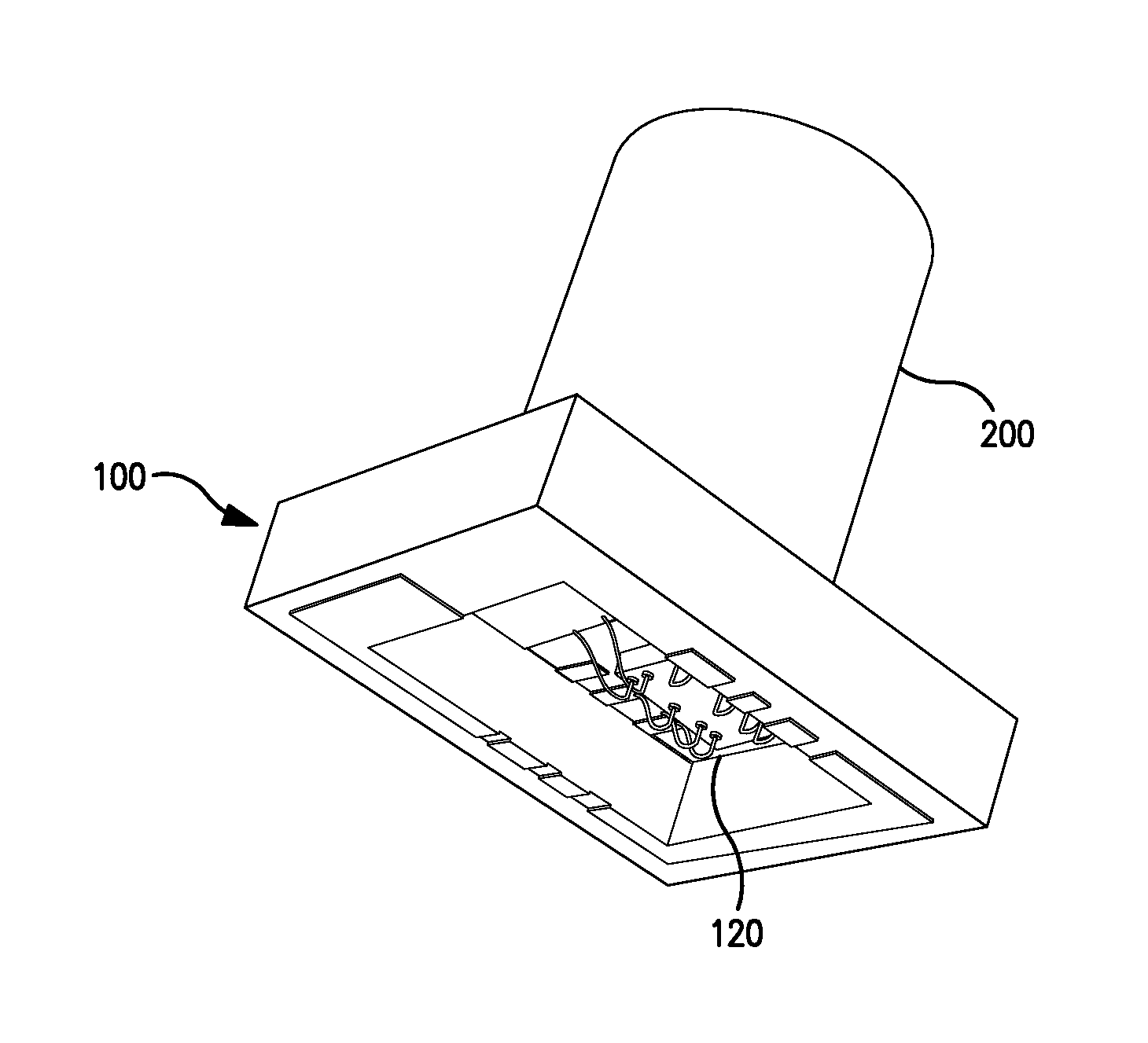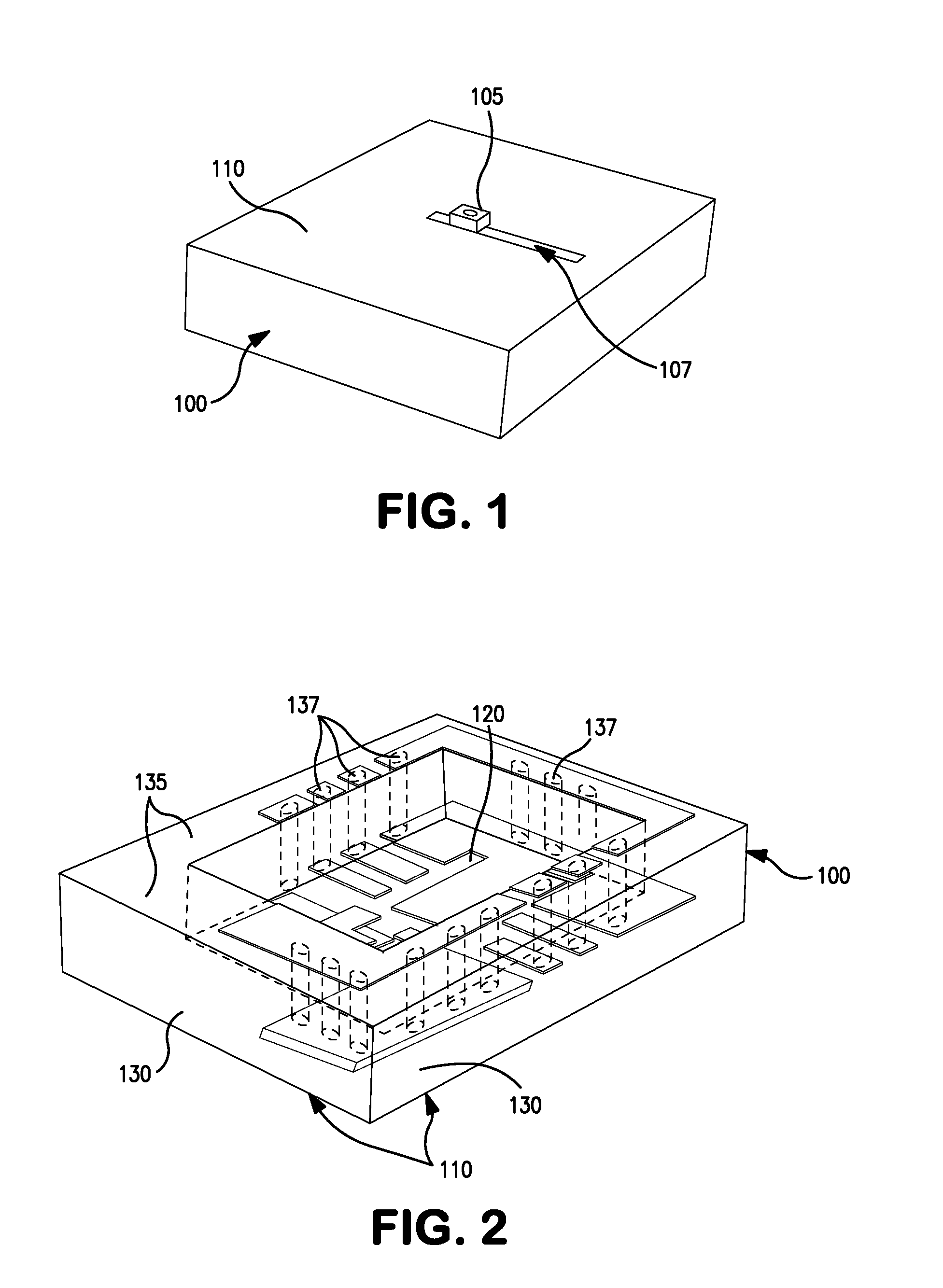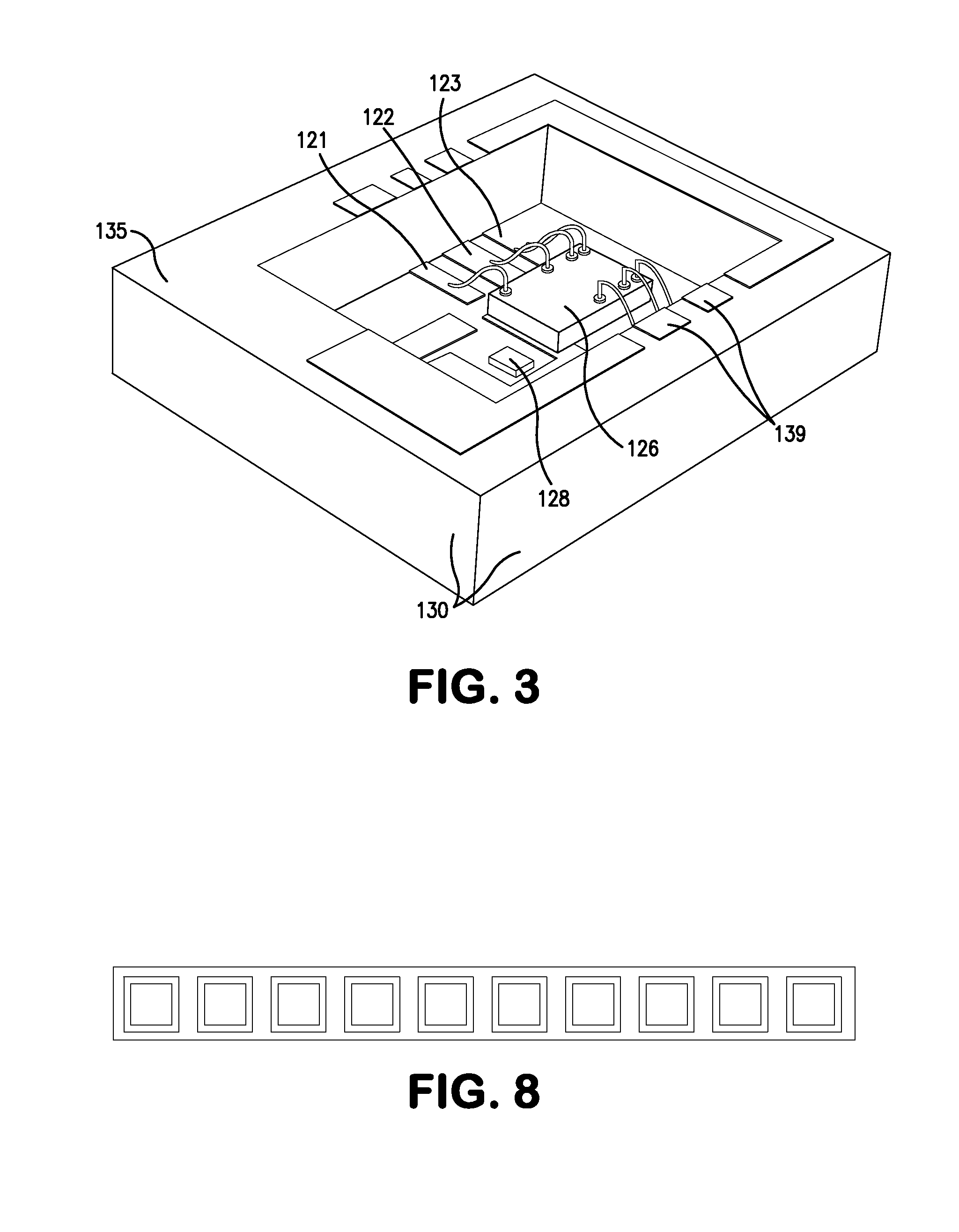Optical Receiver Method And Apparatus
a receiver and optical technology, applied in the field of fiber optical communication systems and techniques, can solve the problems of not being able to singulate into a size as small as a ceramic, unable to achieve the conductor width, warpage issues, etc., and achieve the effect of shortening the path length, reducing inductance, and high frequency operation
- Summary
- Abstract
- Description
- Claims
- Application Information
AI Technical Summary
Benefits of technology
Problems solved by technology
Method used
Image
Examples
Embodiment Construction
[0027]FIGS. 1 and 2 show an embodiment of an optical receiver apparatus in accordance with an embodiment of the invention and which is illustrative of an embodiment of the method of the invention. An open-ended cavity 100, is formed of an insulating material such as a ceramic. In the illustrated embodiment, the outer locus of the cavity is generally in the shape of a three-dimensional parallelepiped and includes a base having an outside surface 110, an inside surface 120, and peripheral sidewalls represented at 130. At the open end of the cavity, the sidewalls 130 terminate at a planar sidewall shelf 135.
[0028]In the present embodiment, there are three planes on which conductive metallization regions (which may be strips or segments thereof) are applied. For reference, the outside surface 110 of the base is referred to as the “first surface”, and it defines one of the planes which is called the top plane. The inside surface of the base is referred to as the “second surface”, and it ...
PUM
 Login to View More
Login to View More Abstract
Description
Claims
Application Information
 Login to View More
Login to View More - R&D Engineer
- R&D Manager
- IP Professional
- Industry Leading Data Capabilities
- Powerful AI technology
- Patent DNA Extraction
Browse by: Latest US Patents, China's latest patents, Technical Efficacy Thesaurus, Application Domain, Technology Topic, Popular Technical Reports.
© 2024 PatSnap. All rights reserved.Legal|Privacy policy|Modern Slavery Act Transparency Statement|Sitemap|About US| Contact US: help@patsnap.com










